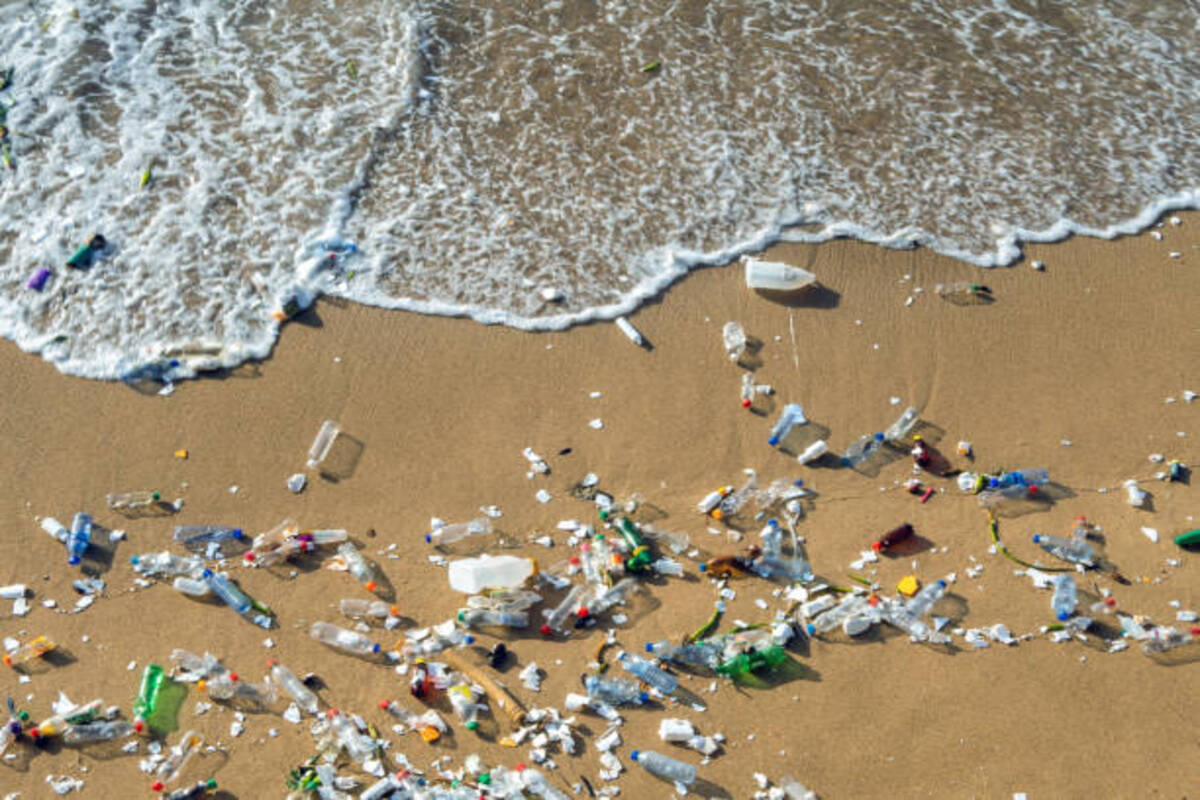S. Korean govt mulls further cut in EV subsidies
The government is considering further cutting electric vehicle (EV) subsidies next year to instead use the funds to supplement insufficient charging infrastructure, sources said on Sunday.
The environmentalists, however, feel differently and insist that even recycled plastic clothes have a great environmental cost.

Recycled plastic clothes cost dear for the environment
Fashion is an ever-evolving world. Fashion trends reflect not only life and seasons but everything and anything which can impact us, even climate change, to say. With growing environment consciousness fashion brands, the world over wants to reflect climate sensitivity through their new trends by manufacturing recycled plastic clothes and making it their fashion catch and a saleable point. The environmentalists, however, feel differently and insist that even recycled plastic clothes have a great environmental cost.
Many brands, spinning mills, and businesses especially in the direct-to-consumer arena convert plastics into products. Since the 1990s this practice of recycling plastic into products has been a popular practice and is considered a way to contribute to a circular economy.
Popular brands like ZARA, Lefrik, Nike, and H&M, proudly flaunt the material as proof of their ‘green’ initiatives. From swimwear to snow wear companies are making something useful out of plastic waste.
Advertisement
The environmental cost of Plastic Clothes
Nevertheless, a recent survey divulges that recycling plastic trash into apparel is not just a poor strategy, but it still has an environmental impact, even if it is lesser than the traditional fashion industry.
Dr. M Shekhar, an environmentalist says, “plastic use is declining due to taxes imposed on them and there is a rise in reusable coffee cups and water bottles. But it is still a massive problem. Polyethylene Terephthalate (PET) bottles are the most common type of recycled plastic. The reusing process is very long, after sorting, and cleaning, the bottles are melted down into little pellets and then spun into yarn to make garments. But what about these garments which cannot be recycled further, these clothes are just on a ‘one-way route’ to landfill, incineration, or being dumped in nature.”
PET bottles are generally considered the best substitute for polyester and 99 percent of the polyester comes from it. Polyester is petroleum-based material, which makes up over 65 percent of the fibers used in the textile and garment industries.
Recently, plastic bottles gathered from three American national parks were converted into a range of bags and t-shirts by more experienced brands like The North Face. Patagonia, an outdoor clothing company, has been recycling plastic into fleece jackets since 1993,
If we look back, so far, 8.3 billion metric tonnes of plastic have been manufactured, and from 8.3 billion metric tonnes 6.3 billion metric tonnes were waste accounted for which ended up in oceans and landfills, where this will remain for centuries due to the inability of plastic to disintegrate.
According to the UK-based Allen Macarthur Foundation, which works on ideas of building a circular economy, there could be more plastic than fish in the oceans by 2050. It stresses changing the way humans design, use, and reuse plastics.
Dr. Ramana, ex-professor of DU and an environmentalist says, “clothing brands are just jumping on this bandwagon and many among these are surf brands who see the problem on beaches, coastlines, and in our oceans, and with the fake motto they want to fight back to save the ecosystem which they love.”
She adds; “If fashion brands are seriously so much concerned about reducing their environmental impact, they should stop downcycling plastic bottles into clothes and focus on cutting their addiction to fossil fuels and curbing overproduction”.
According to the World Economic Forum, the fashion apparel industry worldwide produces 10 per cent of all humanity’s carbon emissions, dries up water sources, and pollutes rivers and streams.
Nazmi Haider, a biology teacher says, “Many issues related to plastic fashion, like microfibre pollution, cannot be solved by recycled plastic. While wearing, and washing, during production, many tiny plastic particles are shed from garments which continue to pollute the ocean .”
Many fashion brands and designers also agree that recycled plastic bottles and clothes are not sustainable.
According to Pooja Mittal, a fashion designer, in India consumption of plastic per person is 11kg, and the country is still among the top 20 consumers of plastic globally. The industrial use of plastic for the manufacturing of goods and products can only be justified if there is no plastic waste. And controverting the PET bottles into fiber leads to greenwashing. So ultimately recycled polyester is not a sustainable solution for the fashion waste crisis and now fashion designers are looking for new alternatives.
Organic Fashion is the new Trend
Many fashion designers are now promoting organic clothing as a new alternative to sustainable fashion. Organic clothes are manufactured by using fibers made up of bamboo trees, aloe vera, banana jute, etc. The organic market has bloomed from 20 percent to 40 percent during the pandemic time.
Siddharth Yadav, Founder of Pure Being (a slow organic fashion brand) says, “Sustainability does not mean only nature friendly or beneficial for the environment, but it should also be comfortable and friendly for our skin and body. The clothes made up of recycled PET bottles not only end up in landfills but also cause several skin diseases. Hence, they are not at all sustainable.”
Undoubtedly, plastic waste has serious repercussions for ecological health, and recycling it for better use can be friendly to nature but it is not the solution to a sustainable environment.
The industry will never stop this practice, and neither will the oceans stop being clogged with plastic until we push forward and settle for less. Recycled plastic clothing is not going to save the fashion industry or the environment. It is the consumers who can do it.
Advertisement